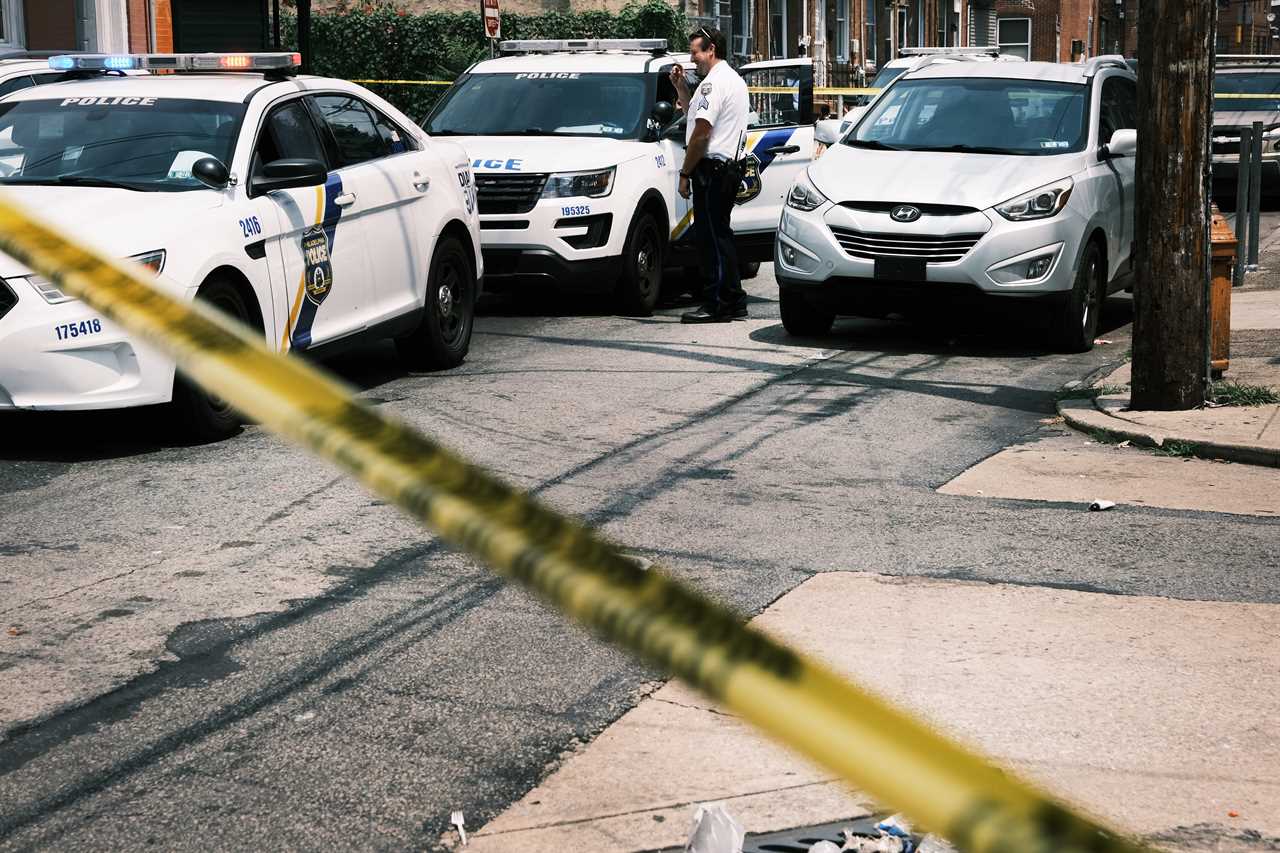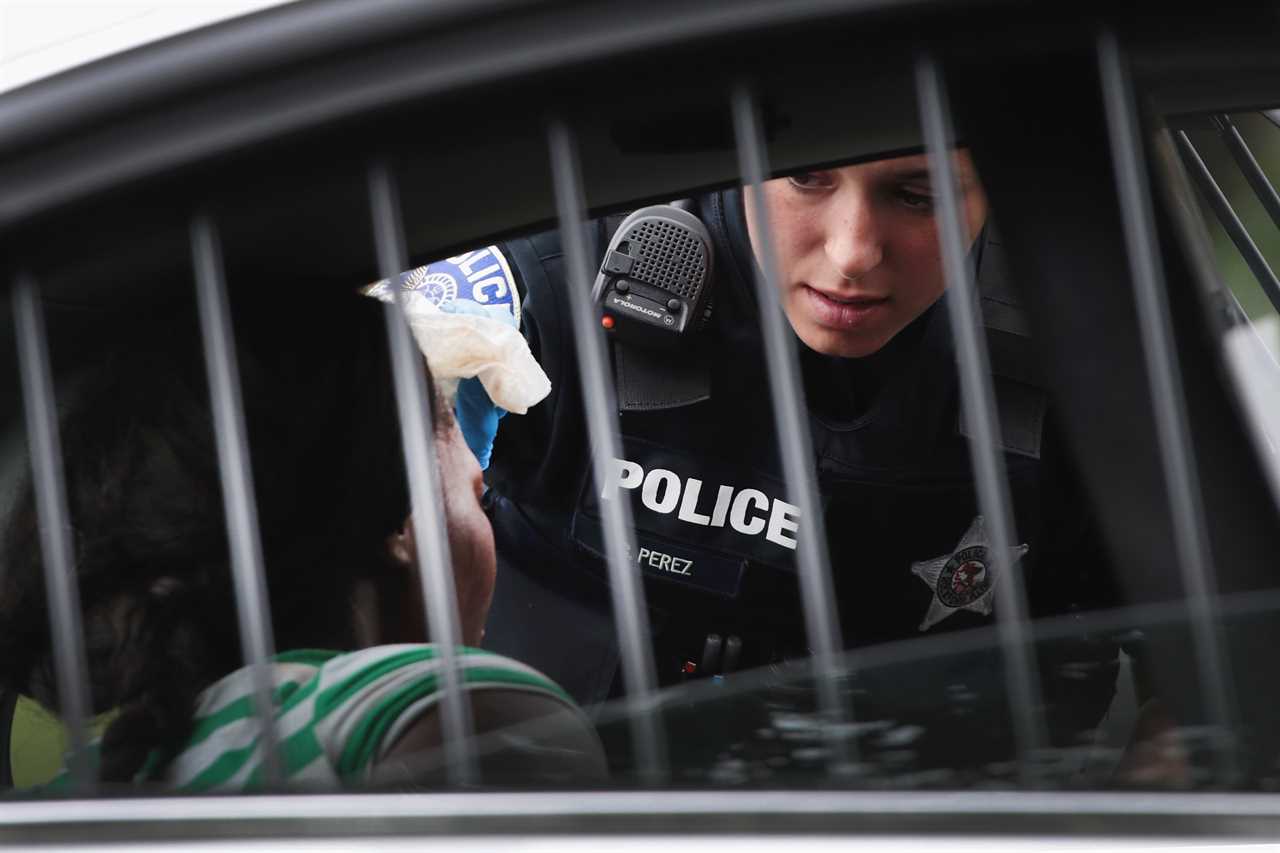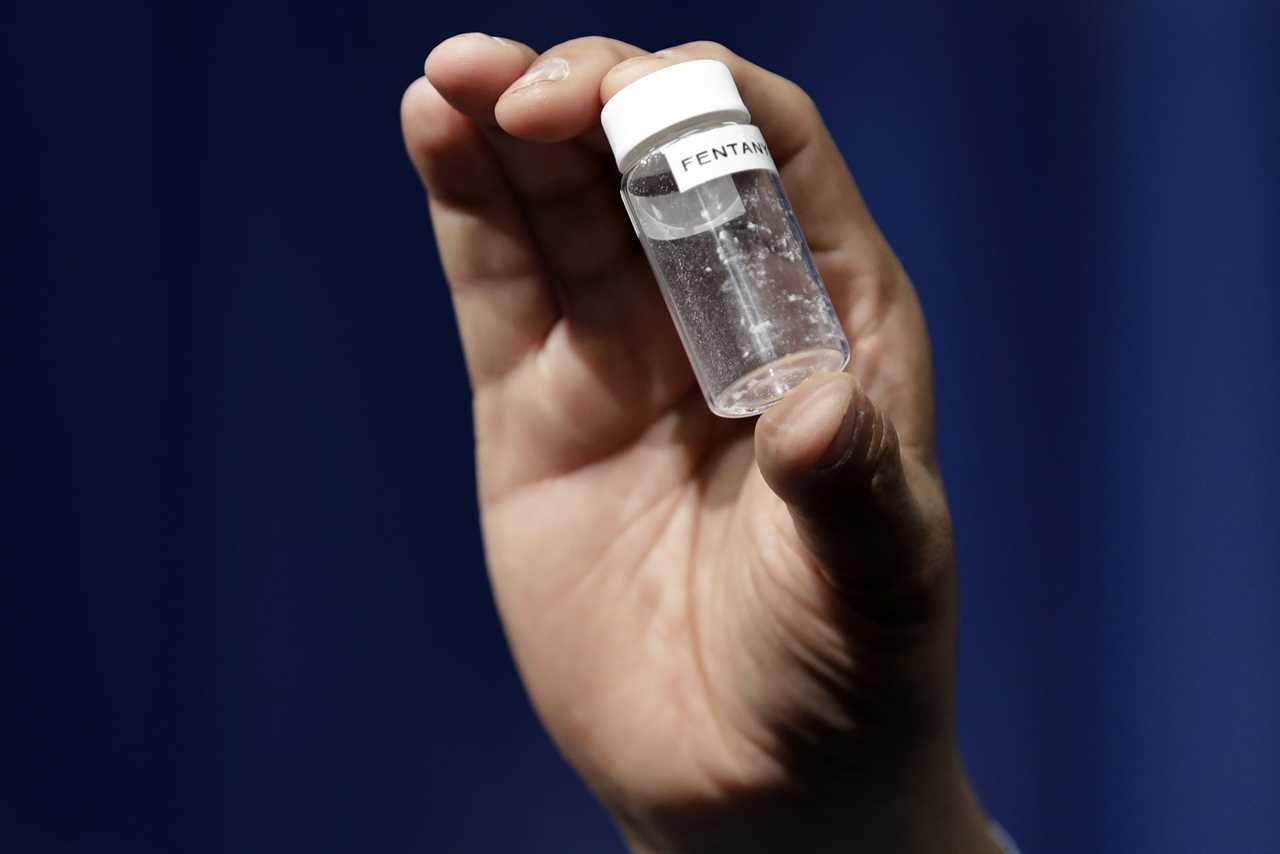
In 2018, the Trump administration issued an emergency order that would make it easier to prosecute people for selling so-called fentanyl analogues, drugs that share the same chemical structure of the powerful synthetic painkiller that has helped to fuel the nation’s opioid epidemic. Even as the Trump administration began embracing criminal justice reforms and opioid treatment elsewhere, the temporary order was part of a wider law-and-order crack down on new variations of the substance that had been flourishing in illegal drug markets.
The move was small, but significant. With little fanfare and debate, it gave federal prosecutors across the country sweeping new authority to charge people for federal drug crimes, triggering onerous mandatory minimums without the usual scientific process to determine whether the novel new drugs people peddled were even dangerous.
Yet, it wasn’t just a Trump phenomenon: On Thursday, Congress reauthorized the fentanyl copycat order for the sixth time — and the fifth time since Joe Biden’s inauguration — with broad bipartisan support, extending it to the end of this year. Instead of opposing the stricter enforcement, Biden favors making the order permanent — a move civil rights groups, public health researchers, criminal justice reform experts and other critics argue would further embolden federal law enforcement authorities and disproportionately affect low-income defendants of color. Opponents say it would usher in a remarkable change in drug law, one that criminalizes thousands of substances, some that haven’t even yet been developed, and set a precedent that could eventually extend to other drug categories.
The order has become a prime example of how the overdose crisis appears to be quietly eroding bipartisan resolve to tackle criminal justice reform. “It is déjà vu, a continuation of the failed war on drugs,” says Kanya Bennett, managing director of government affairs at the Leadership Conference on Civil and Human Rights, the nation’s largest and oldest civil rights coalition. “It is in complete contrast to progress we have made around marijuana and sentencing reforms. … It is compromising to racial justice work.”
Federal authorities usually go through a multistep checklist to classify, or schedule, an individual drug into a certain category, which then determines how easily it can be researched and whether it merits criminal penalties. Some fentanyl analogues have already been individually tested and scheduled. But the 2018 order puts fentanyl copycats, which can include thousands of substances, into the government’s strictest drug control category — Schedule I, which also includes heroin, marijuana, LSD and ecstasy — without that scientific review. This represents the first time an entire category of drugs has been scheduled based on chemical structure alone.
In some cases, those fentanyl analogues can be more powerful than fentanyl, which is in the slightly less restrictive Schedule II category. But in other cases, analogues can be harmless or even potentially therapeutic. The FDA has testified that at least one new, potential overdose-reversal agent has fallen victim to the class-wide scheduling order.
Prosecutions for fentanyl-related substances soared during the Trump administration as the substance became more ubiquitous. The number of people prosecuted for and convicted of fentanyl-analogue crimes was nearly non-existent in 2016, but grew to 233 in 2019, according to data from the U.S. Sentencing Commission. Nearly 70 percent of those prosecutions targeted Black and Hispanic people, many of them street dealers rather than major drug kingpins, according to the government data.

Prosecutions made under the authority of the 2018 emergency order accounted for only a small part of that increase, with just eight prosecutions during the first two years of the fentanyl-analogue emergency classification, according to the Department of Justice. But some defense lawyers worry the impact might be bigger than the data show. Based on her conversations with defense lawyers and independent research, Patricia Richman — national sentencing resource counsel at the Federal Public and Community Defenders, which represents indigent clients in federal cases — argues that many more people are likely being charged under the emergency order. Federal authorities have yet to release updated data on how the law has been used since 2020.
“There is an absolute lack of transparency,” says Richman. Because it’s so new, so untested, she’s also worried about the order’s potential for abuse: “Anytime a fentanyl analogue pops up in a case, it’s scary.”
Meanwhile, the opioid crisis has worsened: Drug overdose deaths have reached record levels, topping more than 100,000 in the 12 months ending in September 2021 with death rates among Black people catching up to rates among white people. By June of last year, synthetic opioids, which include fentanyl and related substances, accounted for 65 percent of all drug overdose deaths, representing a massive increase from just a few years earlier.
The White House, along with lawmakers who support the proposal, argue it gives prosecutors flexibility to stay one step ahead of drug dealers. By skirting the normal process for deciding whether a substance should be illegal, federal prosecutors can more easily go after dealers and traffickers who make new fentanyl analogues more quickly than they can be banned. Without the authority, “evil scientists and criminals who run labs in China and Mexico will be able to avoid law enforcement as they flood the United States with unlimited slight variations of this deadly drug,” Sen. Rob Portman (R-Ohio) said in a floor speech last year, arguing for an extension of the order.
“It’s an important tool for law enforcement given the unusual nature of fentanyl,” says Rahul Gupta, director of the White House Office of National Drug Control Policy. Gupta argues that more enforcement can work hand in hand with an increase in treatment and harm-reduction efforts, such as disseminating fresh needles. “We have to keep up efforts to reduce supply of fentanyl.”
“Clearly we’re at an inflection point,” he adds. “If we don’t act more Americans will die.”
Even though civil right groups and progressive lawmakers, most vocally Sen. Cory Booker (D-N.J.), oppose making the emergency order permanent, it’s an open question whether the proposal represents a political risk for Biden. His tough-on-crime image made him a target in the 2020 Democratic primary, but as president he is contending with not just an intractable opioid overdose crisis but also a crime wave. Critics worry that midterm dynamics favoring the GOP mean Biden will feel more pressure to make the order permanent.
Extending the order again gives “this false impression that Congress is doing something” about opioid overdose deaths, Booker argued during a recent floor speech. “It allowed government to neglect the deeper calling for us to really deal with the challenges as they are.”
On a Thursday in mid-February, Biden traveled to Lorain, Ohio, part of a majority-white, swing district area in the northeast part of the state where death rates from drug overdoses have been surging in recent years. The president was there to tout his infrastructure bill, not to talk about opioids, but the timing was striking: On the same day of the visit, Congress reauthorized the fentanyl-analogue order for the fifth time. When the Trump administration had implemented the order more than three years earlier, it specifically targeted the area around Lorain for federal fentanyl-related prosecutions.
One of the men federal prosecutors caught in 2018 was Todd Coleman, a small-time drug dealer in Lorain County, who received a 10-year prison sentence for distributing about two tablespoons of drugs laced with fentanyl-related substances. About a year and half into Coleman’s sentence, Patricia Richman contacted Coleman’s lawyer, assistant federal public defender Jeffrey Lazarus.
Because data about the scheduling order had been hard to come by, Richman was doing her own digging into the impact. With Richman’s help, Lazarus went through his old cases and realized he had missed something in Coleman’s case. One of the drugs that Coleman sold and that a crime lab had identified in fact had already been removed from the schedules, and the other one wasn’t even harmful. He shouldn’t have been charged at all under the emergency order, but because of its breadth, neither prosecutors nor the defense realized the error at the time. A judge eventually resentenced Coleman to three years for selling cocaine, instead of the 10 years he had initially received. Last week, Coleman moved into a halfway house in Cleveland from a federal prison in West Virginia.
But a reversal such as Coleman’s is rare. People charged with fentanyl analogue crimes from July 2018 to June 2019 received an average sentence of 97 months, compared with an average of 74 months for fentanyl offenders, according to the Sentencing Commission report. Critics of the order argue it also pushes more drug defendants into the federal justice system, rather than state ones, where drug courts are more readily available to offer treatment, rather than incarceration.
Lazarus told me that even though Lorain County is majority-white, most of his clients prosecuted under this emergency authorization are Black. They are getting tougher sentences compared with defendants charged with other drug crimes, and no options for treatment, he says. Many, like Coleman, are at the bottom of the drug distribution food chain and say they aren’t quite sure what’s in the pills and powders they are selling.
“In the defense community, this is crack 2.0,” Lazarus says. “It’s heartbreaking. … Our eyes are opened but no one wants to acknowledge disparities.”
Richman argues the order is unnecessary: Federal prosecutors can nab people who deal fentanyl analogues under existing law, which was beefed up in the 1980s to help law enforcement deal with designer drugs. They just have to go through a scientific testing process to make sure the compound being sold is actually dangerous before they can get a conviction, a lengthier but necessary process, she says. The new order, she says, marks a huge shift in how the country handles opioid cases, giving federal authorities much more power to arrest and charge suspects with crimes or more leverage to negotiate onerous plea deals.
The Biden administration says its proposal to permanently place thousands of fentanyl-related substances into the Schedule I category before going through a vetting process would balance the concerns of civil rights groups by doing away with mandatory minimum sentences in fentanyl analogue drug crimes. That would represent a change to the Trump-era emergency order, which keeps mandatory minimum sentences in place for fentanyl-related substances. The Biden proposal also would ease the process for researchers to request permission to study a fentanyl analogue for therapeutic purposes.
The goal, a White House spokesperson said, is to reduce the supply of illicit drugs, “while safeguarding against racial disparities in prosecution and sentencing and reducing barriers to scientific research for all Schedule I substances.”
Researchers who have studied the opioid epidemic talk about the different waves of the crisis. First, people got hooked on prescription opioids. When feds cracked down on pill mills and pharmaceutical companies, people turned to heroin. When the feds rounded up heroin dealers, people turned to fentanyl. Now they are turning to fentanyl analogues.
Dave Lettrich remembers when federal law enforcement arrested dozens of heroin dealers in a major 2019 drug bust in Pittsburgh. From a law enforcement standpoint, the bust was a success, says Lettrich, the executive director of Bridge to the Mountains, an organization that serves unhoused people in the city. The move got heroin mostly out of Pittsburgh. But on the streets, people addicted to drugs had to find new dealers they didn’t know, which meant buying different products they couldn’t trust.
“There was a major shift in the product,” Lettrich says. “From that point on, it was straight fenny.” (Fentanyl is about 50 times more potent than heroin.) While drug deaths have declined in Pittsburgh, overdoses have not, which Lettrich attributes to the distribution of an overdose reversal agent called Narcan. “Overdoses have become such a regular part of life here,” he says.

Trying to curb overdoses by attacking supply — as the fentanyl-analogue order is intended to do — can work in the short term, says Daniel Ciccarone, a professor of family and community medicine at the University of California, San Francisco. From 2014 to 2017, the number of new and different substances with a similar chemical structure to fentanyl increased year after year as suppliers looked for alternatives to heroin. “The creativity of the traffickers was extraordinary,” he says. But after the fentanyl analogue emergency order, the market stabilized, with fentanyl analogues forming roughly 10 percent of the entire fentanyl market.
But the majority of the fentanyl supply is still the “mother chemical,” he says, and the overall supply is increasing, moving across the country, killing more and more people — some of whom don’t know it is in the drugs they use and others of whom seek out the potent high. Cracking down on fentanyl dealers, especially those at the street level, hasn’t made a dent in reducing the overall supply of drugs sold on the street or over the internet, Ciccarone argues. “Nothing that we have tried in terms of reducing fentanyl availability has worked to reduce fentanyl supply,” he says.
That’s why he’s also skeptical of the impact of class-wide scheduling of fentanyl analogues. People addicted to powerful substances will find another way, he says. Groups opposing the class-wide scheduling order argue that the resources spent on enforcement should instead go toward radically expanding treatment. The threat of prison time can even make people reluctant to seek treatment, which is what Ciccarone and other public health researchers agree will ultimately curb addiction and death.
Class-wide scheduling of fentanyl analogues might seem like a short-term political win. The Biden administration and others who advocate for making the temporary order permanent say it will prevent the game of “whack-a-mole” that prosecutors have to play to get ahead of new fentanyl copycats. “In order to avoid prosecution, drug traffickers started making slight modifications to fentanyl … these tiny variations allow these traffickers and these scientists to evade prosecution,” Portman said last year. He and Sen. Joe Manchin (D-W.Va.) have introduced a bill, in parallel with the White House proposal, that would permanently extend the class-wide scheduling order.
But history shows that drug criminalization often just forces suppliers to get even more creative.
“It is the paradoxical, inadvertent effects of good intentions,” Ciccarone says. “If we look across the drug categories, right now we have the most potent opioids, the most potent fentanyl, the most potent meth, the most potent THC.”
“To me it shows that we are reaching an end game with supply control,” he adds. “What is your next move?”
----------------------------------------
By: Renuka Rayasam
Title: ‘This Is Crack 2.0’
Sourced From: www.politico.com/news/magazine/2022/03/13/fentanyl-analogues-drug-war-00016805
Published Date: Sun, 13 Mar 2022 06:00:00 EST
Did you miss our previous article...
https://consumernewsnetwork.com/politics-us/dems-get-a-break-in-the-culture-wars






